Mining is a temporary land use, so having found, evaluated, designed, planned and operated that mine in a safe environmentally responsible way. It remains or us to tidy up, and then to hand the land over to some future productive use. There is a societal expectation that post mining the land will be returned to some former productive use. Commensurate would be the productivity that it had primly although it might not be the same use. This land use should be viable or the long term and not just the short term. Some regulators strictly defined what is meant by long term and required viability guarantees or up to a thousand years. Although periods of a hundred to two hundred years are more common. There are a number of issues beyond the immediate clean up o infrastructure and waste on the site that requires management to achieve these issues. 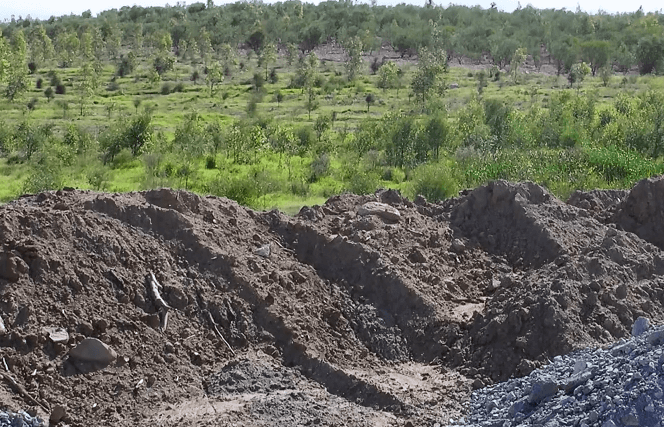 They are broadly described under the headings of:
They are broadly described under the headings of:
- Final landform design
- Tailings management
- Final voids or open pits
- Ecosystem viability
- Onsite versus offsite impacts
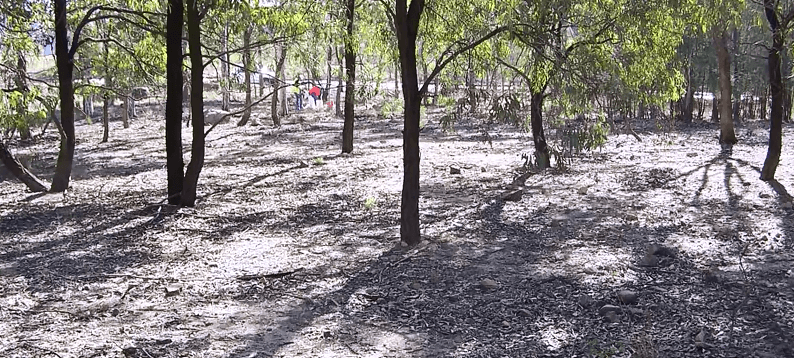
The final landform refers to the shape of the ground left behind after mining concludes. When rock is mined and crushed its volume increases by up to 20 to 30 percent. This is because what was solid rock has now many voids. This means that the pile of waste rock produced even a cart load of material shipped outside of the product is greater than the size of the hole that is going to produce it. As a consequence there will almost always be some form of mine waste structure above the natural ground surface. And this structure needs to be design to be stable and sustainable post mining. Because this structure is higher than the natural land form it will be steeper so that run of velocity and erosion rates will be higher than pre-mining. Unless run of an erosion protection measures are undertaken. Accordingly, hydrology and erosion of stability of the final land form is a major consideration in landform design.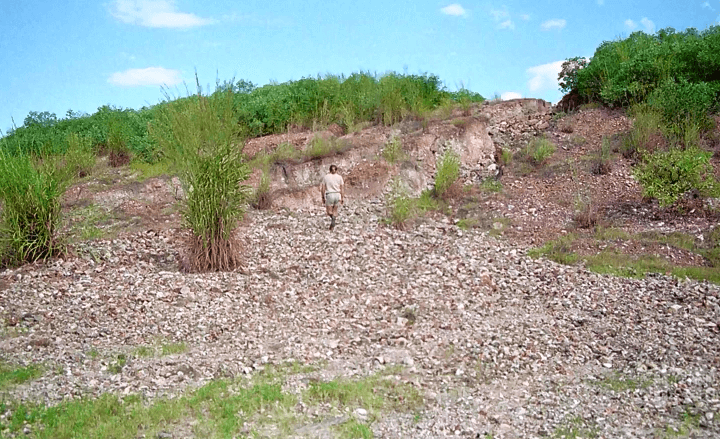
Most mines find that a significant proportion of the cost of rehabilitation are the cost of the earth work required to construct final landform. So significant cost savings can be made if the shape of the final landform is taken into account, when waste rock is dumped during the operation of the mine. From a regulatory perspective, this cost is incurred at one of the least financially viable periods in the operation of the mine. That is when the mine is about to close and profits from production allow. There is a risk that the mining operation ca become bankrupt before rehabilitation is complete. To offset this risk, regulatory authorities may require the lodgment of a sum of money, a rehabilitation bond that is equal to the likely cost of rehabilitation at the end of mining.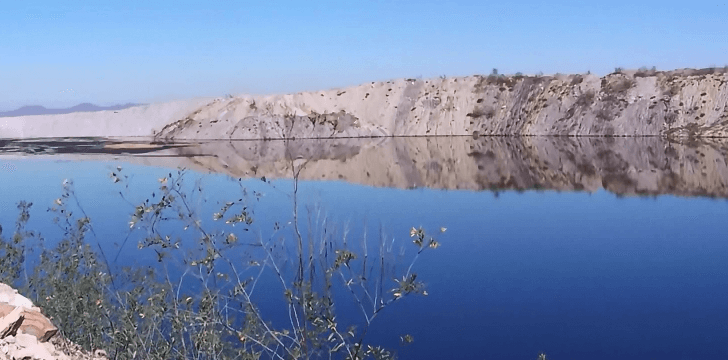
Final landform may contain a large range of waste. Waste rock, which is a more significant issue, to surface mines than underground mines
Below grade ore, which is rock from the ore body where the ore concentration in the rock is too low to make extraction economic with current process and technology.
Crusher reject which are rock fragments of mostly gangue minerals remove from the crushed ore during beneficiation.
Tailings which is fine grain waste in the beneficiation process and
Pyritic waste which is waste containing mineral sulphides that can oxidize in the atmosphere to leach acids.
Tailings are often pump into tailing depositories hooked into dams, as tailings are mud like they have a very low strength and a very low rosion resistance at least until they are dried and this may take many years. Tailings disposal is typically the most difficult part of assuring the long term safety of the final landform. If tailings are exposed they can produce a significant wind erosion hazard. Commonly at mine closure tailings repositories are protected by a rock cap up to a couple of major state. If the repository is constructed above the line surface there is the potential for erosion of the cap and exposure of the tailings.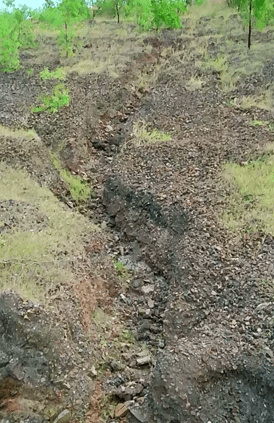
This dissemination is a computer model of erosion taking place in a cap over a tailings repository. If erosion is deep enough to reach the tailings, the rate of erosion will increase because the size of the tailing particles is very fine. Any gully eroded due to the cap, will rapidly expand undermining the cap potentially leading to catastrophic failure of the tailings and closure as can be seen in the photo. I eroded the findings of tailings means that they stay suspended in aquatic aqua systems and they are potentially chemically reactive so they might be implications for water quality downstream. To reduce this risk of exposure through erosion, it is common at mine closure to move the tailing back into the pit. But this is expensive. The results are the potential risk that the tailings may interact with any ground where the structure is intercepted by the pit. To assist the possibility of this it is necessary to undertake original ground work modelling. 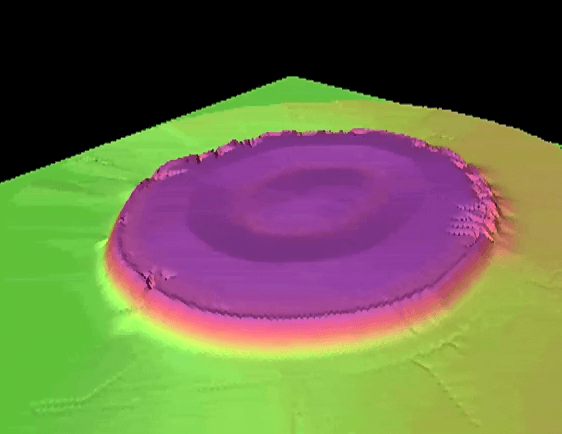 Many open cap mines end up with the final pit or void that is left open after mining finishes. This void will fill up with water when rainfall, reach out to mine areas and run up to natural areas. Fun voids have in the past become holy saline indoor city gravities. Hence a water filled void is also a potential source of pollution for any ground water systems that the pit intercepts. Sustainable ecosystems on the final land form are desirable output that should be compatible with the adjacent land uses, otherwise they may become a source of Ferro flora or fauna. Grasses provide a significant protection from erosion much of the long term viability comes down to rebus of ecosystems or sustaining and their ability to survive extreme conditions such as droughts and fires and floods. It is generally assumed that If rehabilitated land is viable in the short term then it will be viable in the long term. Although there has been cases where this is proved not to be so. Ideally the landform created should be stable over the long term say from a hundred to a thousand years, and to do this it needs to mimic the shape of natural land forms the problem with this however, is that the processes that shape natural and constructed landforms are different because the ground conditions are different. Thus the equilibrium land form shapes will be different in the two cases. Most of the soil and ecosystems on constructed land forms are changing every time. So the stable landform itself may change every time. To solve this problem it is becoming common to use landform evolution computer models to simulate the long-term fate of the constructed landform. The most commonly used is Siberia landform evolution model.
Many open cap mines end up with the final pit or void that is left open after mining finishes. This void will fill up with water when rainfall, reach out to mine areas and run up to natural areas. Fun voids have in the past become holy saline indoor city gravities. Hence a water filled void is also a potential source of pollution for any ground water systems that the pit intercepts. Sustainable ecosystems on the final land form are desirable output that should be compatible with the adjacent land uses, otherwise they may become a source of Ferro flora or fauna. Grasses provide a significant protection from erosion much of the long term viability comes down to rebus of ecosystems or sustaining and their ability to survive extreme conditions such as droughts and fires and floods. It is generally assumed that If rehabilitated land is viable in the short term then it will be viable in the long term. Although there has been cases where this is proved not to be so. Ideally the landform created should be stable over the long term say from a hundred to a thousand years, and to do this it needs to mimic the shape of natural land forms the problem with this however, is that the processes that shape natural and constructed landforms are different because the ground conditions are different. Thus the equilibrium land form shapes will be different in the two cases. Most of the soil and ecosystems on constructed land forms are changing every time. So the stable landform itself may change every time. To solve this problem it is becoming common to use landform evolution computer models to simulate the long-term fate of the constructed landform. The most commonly used is Siberia landform evolution model. 
